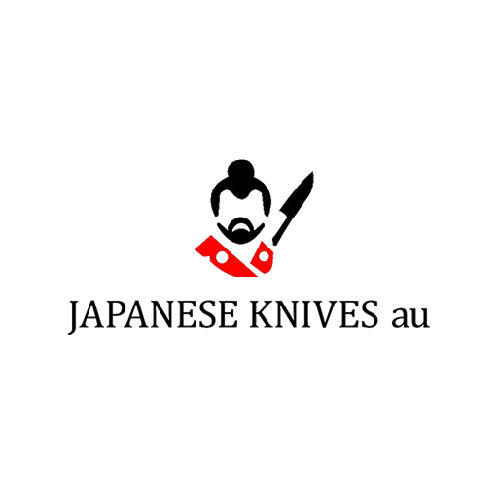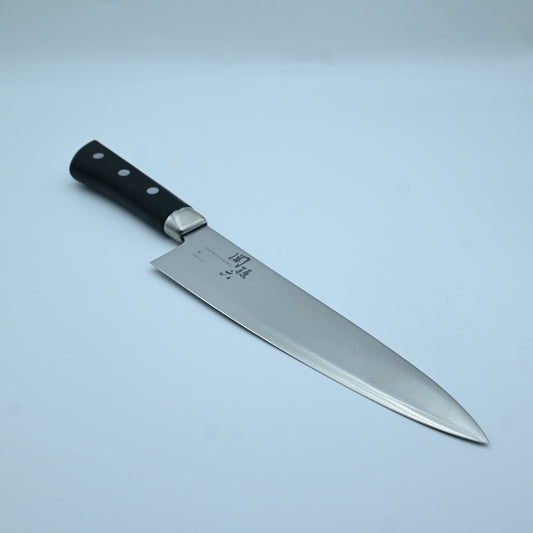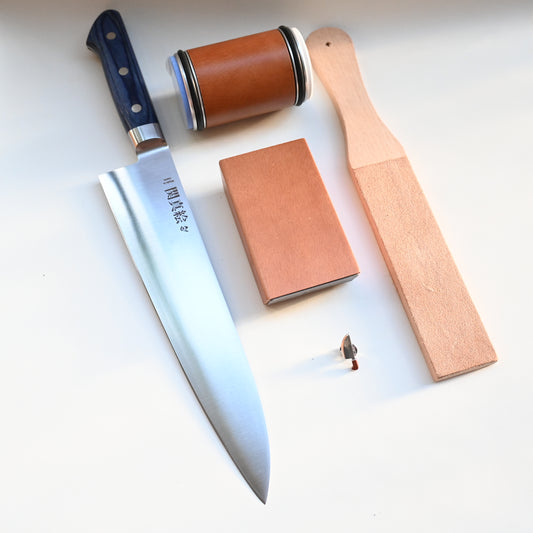Why choose a japanese knife?
The Art of Japanese Knives: Craftsmanship, Tradition, and Precision
Japanese knives are celebrated worldwide for their exceptional craftsmanship, durability, and precision. From the bustling streets of Tokyo to top Michelin-starred restaurants, these knives have earned a revered place in kitchens across the globe. In this article, we’ll explore the history, characteristics, and qualities that make Japanese knives a cut above the rest, and why they should be a staple in every chef’s arsenal.
A Rich Tradition of Craftsmanship
The tradition of knife making in Japan dates back over 700 years. Japanese knives are deeply rooted in the country’s long-standing history of metallurgy and sword making, which has greatly influenced their design and functionality. The same techniques used to craft katana swords are applied to Japanese kitchen knives, resulting in blades that are not only sharp but also incredibly strong and balanced.
Japanese knife makers, particularly those from regions such as Seki City (often referred to as the “City of Blades”), are known for their meticulous attention to detail. Many knives are still handmade by skilled artisans using traditional methods passed down through generations. This process often involves folding and layering high-carbon steel (or Damascus steel) to create a blade that’s not only durable but also incredibly sharp.

The Key Features of Japanese Knives
-
Sharpness
One of the most distinguishing features of Japanese knives is their remarkable sharpness. Unlike many Western knives, which typically have a 20° edge, Japanese knives are usually sharpened to an angle of 15° or even less, allowing for a finer edge that can easily slice through delicate ingredients with minimal effort. This precision is ideal for tasks such as sushi making, fish filleting, and finely dicing vegetables. -
Lightweight and Ergonomic Design
Japanese knives are often lighter than their Western counterparts, providing better control and reducing hand fatigue during extended use. The balance of the blade is carefully designed to work in harmony with the handle, which is often made from materials such as wood, resin, or composite materials for comfort and grip. -
Hardness and Durability
The core of most Japanese knives is made from high-carbon steel, which is harder than the stainless steel commonly used in Western knives. This hardness allows the blade to maintain its sharp edge for longer periods, but it also requires more careful maintenance. Some knives feature a layer of softer steel around the core, helping to prevent chipping while maintaining sharpness. -
Aesthetic Beauty
The visual appeal of Japanese knives is just as important as their functionality. Many feature Damascus patterns—visible layers in the steel that not only look stunning but also enhance the strength and performance of the blade. The intricate forging process often results in unique, one-of-a-kind patterns that make each knife a piece of art.

Popular Types of Japanese Knives
Japanese knives come in various shapes and sizes, each designed for specific tasks. Here are some of the most popular types:
-
Gyuto (Chef’s Knife)
The Gyuto is the Japanese equivalent of a Western chef’s knife, and it’s the most versatile blade in a Japanese kitchen. Typically ranging from 180mm to 300mm, this knife can be used for chopping, slicing, dicing, and mincing meat, fish, and vegetables. -
Santoku (Three Virtues Knife)
A popular all-purpose knife, the Santoku is smaller than the Gyuto and has a flat edge with a slight curve. It’s often used for slicing, dicing, and mincing and is especially good for cutting vegetables, fish, and meat in equal measure. -
Nakiri (Vegetable Knife)
The Nakiri is a straight-edged knife designed specifically for chopping vegetables. Its rectangular shape allows for efficient, precise cuts through produce, making it a favorite among chefs who focus on plant-based cuisine. -
Yanagiba (Sashimi Knife)
The Yanagiba is a long, slender knife with a single bevel edge, perfect for slicing raw fish into paper-thin slices for sushi or sashimi. Its design allows for precise, smooth cuts without tearing the delicate flesh. -
Deba (Butcher Knife)
The Deba knife is used primarily for cutting through bone, skin, and cartilage. Its thick blade provides strength and durability for tasks such as filleting whole fish or breaking down poultry.
Caring for Your Japanese Knives
While Japanese knives are known for their impressive sharpness and durability, they do require proper care to maintain their edge and longevity. Here are a few tips for looking after your knives:
-
Hand Wash Only
Always hand wash your knives with mild detergent and warm water. Avoid using a dishwasher, as high heat and harsh detergents can damage the blade and handle. -
Dry Immediately
After washing, dry the knife thoroughly with a soft towel to prevent rust. Do not leave the knife wet, as moisture can lead to oxidation on high-carbon steel blades. -
Use a Sharpening Stone
Regularly sharpen your knives with a whetstone (sharpening stone) to maintain the edge. Depending on the frequency of use, sharpening every few months to a year is recommended. For very fine edges, you can use a finer grit stone for polishing. -
Store Properly
Use a knife block, magnetic strip, or protective knife sheath to store your knives safely. This helps prevent accidental damage and ensures the blade remains sharp. -
Avoid Hard Surfaces
Avoid cutting on hard surfaces such as glass, ceramic, or stone. Opt for wooden or bamboo cutting boards to preserve both the knife edge and your work surface.
Why Choose Japanese Knives?
The reasons to invest in a high-quality Japanese knife are clear. Not only do they offer unparalleled sharpness and precision, but they are also a testament to the centuries-old tradition of craftsmanship. A Japanese knife is an investment in both functionality and artistry that can last a lifetime, given the right care.
Whether you’re a professional chef or a passionate home cook, adding a Japanese knife to your kitchen collection is a decision you won’t regret. Experience the elegance, efficiency, and exceptional performance that have made Japanese knives the gold standard in kitchens around the world.
Shop Our Collection of Premium Japanese Knives
Explore our curated selection of authentic Japanese knives, from the versatile Gyuto to the delicate Yanagiba. Crafted with precision and care, each knife offers unmatched sharpness and beauty. Start your culinary journey today with a tool that’s as much a work of art as it is an essential part of your kitchen.












